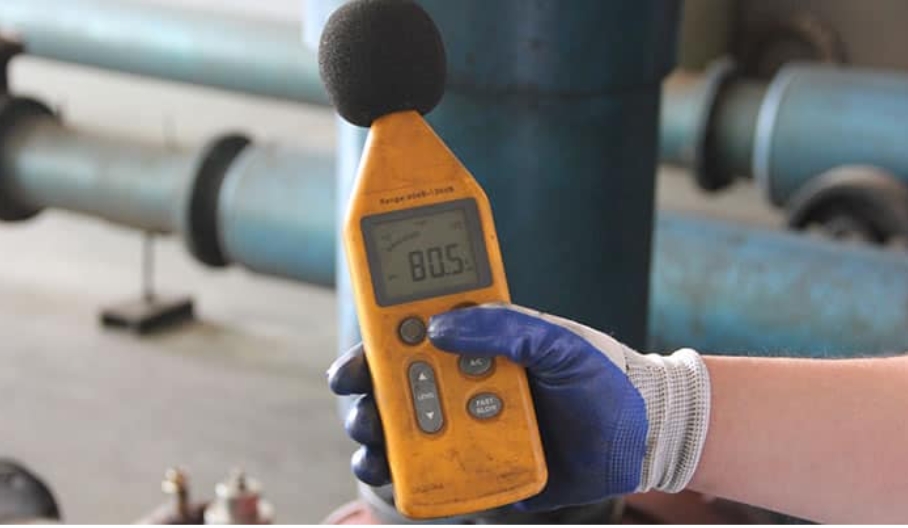Noise testing is an important part of workplace safety for industries which expose their employees to a high level of noise regularly. The high level of noise is very common at manufacturing plants, construction sites and mining operations, and may pose serious health consequences, such as NIHL to these workers. NIHL is irreversible and permanent; hence, early detection and control of noise at workplaces are very important in the interest of safeguarding health and well-being. Besides health hazards, uncontrolled noise reduces productivity and concentration levels, and thus can contribute to workplace accidents. Noise testing, the subject of this article, involves a discussion on the importance of noise testing, how the noise test is conducted, equipment used, and best practices aimed at observance of legal standards and a safe work environment.
Why Is Noise Testing Important?
Prolonged exposure to excessive noise could result in a wide range of health disorders, the most serious being hearing loss. According to Safe Work Australia, exposure to noise levels above 85 decibels (dB)for greater than an 8-hour working day can result in permanent hearing damage. Peak noise levels of 140 dB or greater, occurring perhaps suddenly from machinery malfunction or even explosions, can result in immediate hearing loss.
Noise-related damage often occurs gradually, and the individual does not necessarily feel that something has gone wrong until it is too late. In such a case, employees may not realize that their hearing is deteriorating until permanent damage has taken place. For this reason, regular testing for noise is very important so that areas of concern can be recognized at an early stage and long-term health problems can be avoided.
Beyond the physical hazards, noise interferes with communication and concentration processes in work. The result would be increased chances of accidents, especially in hazardous situations when the workers depend on spoken orders or audible warning signals. By regular noise testing, employers are able to reduce these risks and thereby provide a more safe and productive environment to work in.
Legal Requirements for Noise Testing:
Noise testing in Australia is regulated under the Work Health and Safety (WHS) Regulations 2011. Employers are thus required to take appropriate measures to ensure that exposure of noise to the worker does not exceed the exposure standard of 85 dB over an 8-hour period or 140 dB for a single peak noise event. Where this limit exceeds, employers are meant to take immediate action in order to reduce exposure to noise.
Due to this, noise testing has to be routinely carried out at areas of a business where workers may be exposed to hazardous noise levels. Failure to conduct noise testing properly can result in penalties and legal action being taken along with, more importantly, harm to workers’ health.
Noise Testing Process:
Noise testing is the process of measuring the levels of sound in different areas in the workplace to find out whether they meet the standards of the regulator. This normally involves the following steps;
1. Identification of Noise Sources
Testing noise must begin with the identification of those areas in the workplace where noise could be a problem. These are usually areas where heavy machinery or equipment is in use: workshops, production lines, and construction sites. Employers must assess constant noise-all types of machinery-along with variable noise, such as alarms sounding or the movement of vehicles.
2. Choosing the Correct Testing Equipment
For business to test the noise effectively, there should be appropriate equipment designed for measuring sound levels. Among the common devices in noise testing include:
Sound Level Meters (SLMs): SLMs are handheld, two-measurement devices of instantaneous intensity of sound at any instant in time at a particular place. They can be very useful in finding out the noise “hot spots” where the levels are highest and assessing environmental noise.
Noise Dosimeters: These are worn by workers over the period of a work shift. Noise dosimeters record the total noise exposure to an individual over any time period. This allows for a very specific comprehension of a worker’s average exposure to noise throughout the workday, particularly in those environments where noise levels may change.
Testing for noise should be done during normal working conditions, which includes machinery running as it would during a typical shift. Testing needs to take place at various locations around the workplace because the noise level will vary throughout a facility. Other locations, such as near heavy machinery or production lines, may need to have testing done more regularly than office spaces.
It is also necessary to measure both average noise levels to check that the 85 dB limit is not exceeded and peak noise levels, to check that no spikes in noise exceed 140 dB.
3. Interpretation of the results
Third-party analysis should be done once the measurement of noise levels has been conducted, which is said to show the cases of areas exceeding the regulatory standards. When the exposure limits legally set are exceeded by noise levels, action should be taken to reduce levels and prevent further exposure of employees. Most of the time, data analyses are done with the help of a noise consultant or occupational hygienist, recommending appropriate noise control techniques.
4. Implementation of Noise Control
When noise testing reveals that workers are being exposed to hazardous noise, employers are required to take control measures to reduce the risk. Generally, control measures can be categorized as falling into one of three categories:
Engineering Controls: This is the most cost-effective method and consists of physical changes to the workplace or equipment which cut down the noise at its source. For example, employers may install sound barriers or replace noisy equipment with quieter models or modify existing equipment by adding noise-reducing mufflers or low-noise motors.
Administrative Controls: Modification of work practices serving to limit exposure to noise by workers. These may include but are not limited to employee rotation between high-noise areas and low-noise ones; noisy tasks shall be scheduled when fewer workers are present in the area.
Personal Protective Equipment: If noise cannot be reduced to safe levels through engineering and administrative controls, employees must be provided with hearing protection devices like earplugs or earmuffs.
5. Ongoing Monitoring and Review
Noise testing should not be a one-off activity. Regular testing is necessary in order that the maximum noise limit will not be surpassed, particularly in situations when new machinery is introduced into operation, work procedures change, or any modification of machinery is done. Actually, by measuring the noise levels, the employers could get the continuous observance of the safety regulation and protect their workers from noise exposure.
Best Practice for Noise Testing:
Listed below are some of the best practices that will help carry out noise testing at workplaces and, likewise, ensure workplace safety.
1. Engage Competent Professionals
The engagement of a competent noise consultant or occupational hygienist will ensure that the noise testing is properly conducted to meet set legal standards. Such an expert will be suitably armed with the knowledge and equipment to make a sober assessment of the situation and further advise on appropriate noise controls.
2. Test Periodically
Noise exposure may vary with time due to changes in machinery, processes, or the work environment. Noise testing is crucial on a routine basis to pick up new hazards and ensure that noise controls currently in use are functioning.
3. Involve Employees in the Process
It is usually the employee who can first tell when a noise problem arises. The involvement of the employees in the process of noise testing brings much insight into areas of concern, pointing out potential risks early.
4. Maintain Detailed Records
Employers should maintain records of all noise testing with regards to locations measured, equipment used, and results obtained. These are very important in monitoring exposure to noise over time and in demonstrating compliance with the regulations set by WHS.
Conclusion:
Noise testing is considered a high-priority activity for any workplace that seeks to ensure safety and full compliance, where such processes produce loud noise. Businesses should check for periodic testing of noise levels as a means of finding dangerous areas, instituting the best available controls, and safeguarding their workers from long-lasting damage to health. After all, prioritizing noise management not only brings about legal compliance but also contributes to the safety and productivity of all workers within the facility.

Jennifer David is the creative force behind CelebRiches, your go-to source for celebrity financial exploits. With an unwavering passion for the entertainment industry, she delivers in-depth insights into celebrities’ net worth, combining thorough research with a captivating narrative. Explore the stars’ fiscal journeys through Jennifer’s expert lens, where finance meets fame most engagingly.
